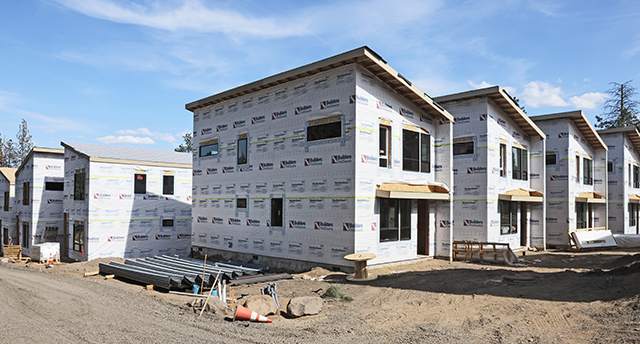The High Desert Museum releases baby owls
Published 5:00 am Tuesday, May 20, 2003
ROSEBURG – Straddling a tree limb 100 feet from the forest floor, Eric Forsman braced himself for a furious air assault.
Warning shouts echoed as two northern spotted owls dive-bombed the wildlife biologist who had advanced too close to their nest. Often, they bluffed. Sometimes, talons poised, they attacked.
Below on moist, musty earth, a team of spotted owl researchers swiftly weighed and marked a squawking, pecking owlet born just 17 days ago in captivity at The High Desert Museum.
”Goodbye munchkin,” said researcher Amy Price, placing the precious cargo into a backpack clipped to a rope. Forsman hauled the package up and introduced the fledgling to its new home – a massive Douglas fir in lush forests outside Roseburg.
”There’s no reason we shouldn’t be able to pull this off,” Forsman said. ”We’ve got high hopes.”
This chick and its sibling made history by being the second and third northern spotted owls ever born in captivity.
Now, they may do it again. Never before have owlets been placed in a nest in the wild this young.
Forsman, a research wildlife biologist for the U.S. Forest Service’s Pacific Northwest Research Station in Corvallis, said placing chicks into nests containing similarly aged fledglings has succeeded with other owl species.
”Doing this … will be a good experience for us in case we have to do it in the future,” he said.
The overall future of northern spotted owls is in doubt.
The bird, which lives in the coastal ranges and Cascade Mountains of Oregon, Washington and northern California, was listed as ”threatened” under the U.S. Endangered Species Act in 1990.
The listing – and the bird’s preference for old growth habitat – made the species a flash point in debates over logging and forest management. The controversy lingers.
In the meantime, the northern spotted owl’s numbers have continued to decline throughout most of their range, Forsman said.
But the future for The High Desert Museum’s owlets may be bright.
Each owlet went to a separate nest in green-blanketed mountains above the Umpqua River in the U.S. Bureau of Land Management’s Roseburg District, an area with a relatively stable northern spotted owl population.
They also went to experienced parents, Roseburg owl researchers said. The two pairs, located miles apart, have both raised chicks in the last several years.
Forsman also believes the timing is right. The researchers brought The High Desert Museum owlets to nests containing chicks of nearly the same age. This is critical, as the older, larger chicks otherwise muscle the younger ones out at mealtimes.
”The tricky part is matching them with the same age brood,” Forsman said. ”They must be born within four or five days of each other.”
The birth of the owlets came as a surprise, said Karen Green, interpretive program manager at the Bend museum. The museum’s adult female owl, Dot, laid eggs during the two previous years in the simulated broken tree snag. Each year, the eggs broke after a week.
But this year, as time ticked toward the 30 or so days it takes for a northern spotted owl to hatch, the staff grew more excited.
”I take it as a compliment from the birds that they feel comfortable enough to breed,” said Carol Nork, a zoologist at the museum.
Museum staff decided soon after the chicks hatched to place them in the wild.
So after the museum closed Sunday, Nork and Forsman snuck into the dark enclosure. With the male owl, Polka, zipping past his head, Forsman gingerly removed the owlets from the nest. He placed them into a wooden box for their 200-mile journey that night to Roseburg.
On Monday morning, with sunlight shining on the oft-soaked town, six researchers and Nork gathered to take the owlets to their new homes.
Before departing, the chicks dined on freshly killed mouse. Forsman ripped the rodent into smaller pieces, even though these birds the size of grapefruits already devour whole mice in a single, prolonged gulp.
”It’s like one of us swallowing a turkey whole,” Price said.
The group traveled into the mountains, winding through varied stages of forest growth along dirt logging roads.
”This is typical of this area,” Forsman said. ”It has nice patches of old growth with cuts around.”
The entourage stopped at nondescript turnouts in the forest. They packed ropes, equipment for attaching bands to the birds’ legs and canisters containing live mice. They then walked through a barrier of thigh-high greenery, no trail in sight.
The destinations for both owlets were high nooks in ancient trees. Northern spotted owls prefer to nest in cavities in large trees, Forsman said.
The researchers weren’t certain either nest would contain chicks, let alone chicks of the appropriate age. But there was only one way to find out.
Forsman donned a stiff leather belt, metal spurs on his legs and a hat to protect his head from angry, swooping owls. He wrapped a stiff hemp rope around the six-foot base of the tree. He then climbed upward, just like the loggers of yore.
The first tree, a cedar, contained a nest with one owlet. Forsman said the juvenile in the nest seemed a bit young, but was still large enough. He tucked the smaller High Desert Museum chick into the tree.
”Luckily, these owls in general can’t count,” he said. They may experience momentary confusion, but will likely soon forget and treat the new arrival as one of their own.
Forsman became even more excited when he ascended the second tree, the Douglas fir. In addition to chicks, the nest contained two recently slain flying squirrels – a northern spotted owl food of choice – stored for a future meal.
”They’ve got two babies just the right size,” Forsman shouted down. ”Let’s give them three.”
Nork snapped photographs as the last High Desert Museum owlet ascended in the backpack. She and other managers at the museum decided that introducing the birds into the forest was the best option.
First, there are few facilities that harbor northern spotted owls, so it would be difficult to find them a home. Museum staff also wanted to contribute to conservation work in the wild, she said.
In the next week or so, Forsman said, the chicks will be old enough to explore outside the nest. They will grow to adult size in about two weeks after that, although they maintain their light coloring during the first 90 days. They will also start flying at about 6 weeks old.
Roseburg researchers plan to check on the fledglings over time. But there are no guarantees of their survival. Roughly 40 to 50 percent of northern spotted owls die within their first year of life.
If they survive, they will search for their own territories this fall. They might breed at 3 years old.
Hiking through ferns up a ravine, Forsman looked back at the Douglas fir nesting site. ”I feel like a big weight has been lifted from my shoulders,” he said. ”It’s no longer up to me. It’s up to them.”
As he continued up the hill, a northern spotted owl hooted in response.
Heidi Hagemeier can be reached at 541-383-0353 or hhagemeier@bendbulletin.com.







